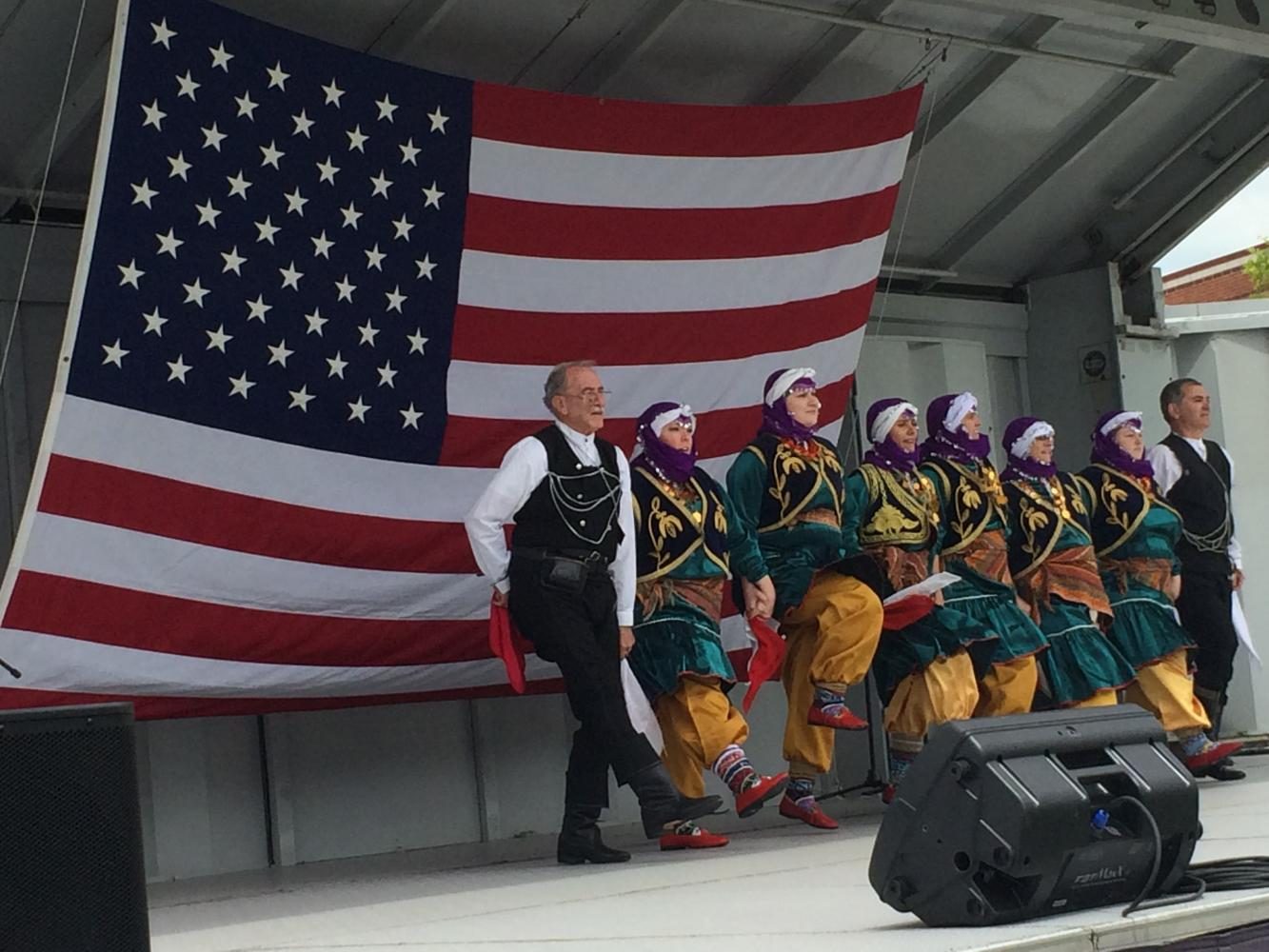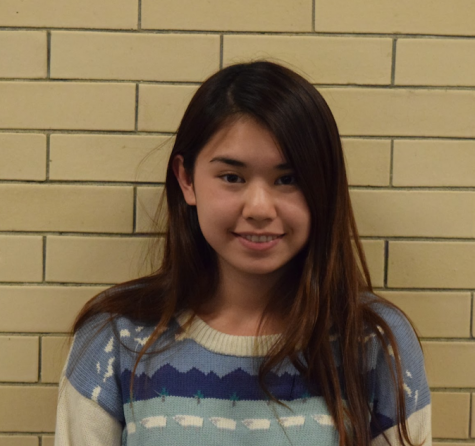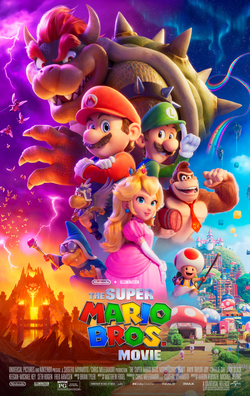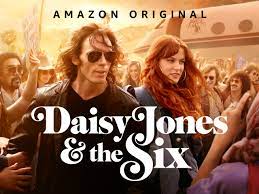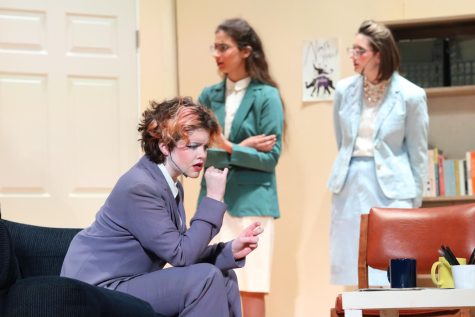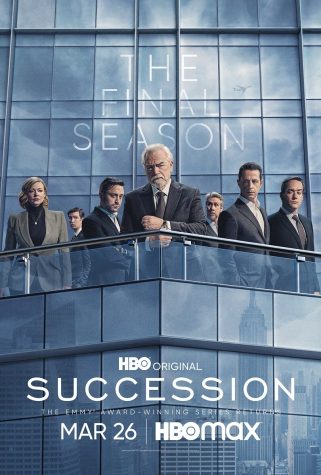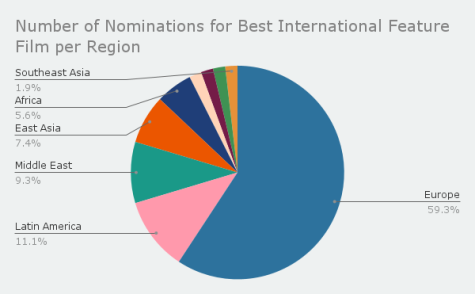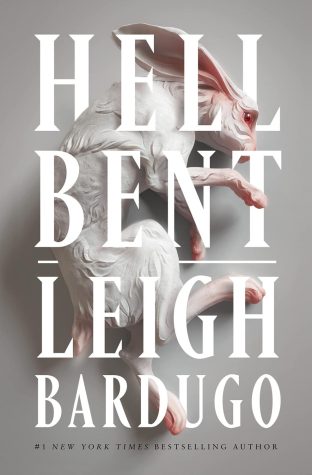A bridge between worlds: Celebrating culture
Turam Turkish Folk Dancers perform a traditional Turkish dance on the outside stage during the festival.
June 2, 2017
Growing up in an Asian-American household has taught me many things. I’ve learned how to speak both English and Vietnamese, as well as celebrate both American and traditional Vietnamese holidays. Of all the things that I’ve learned growing up as an Asian-American born and raised in Chicago, the most important is learning to preserve my Vietnamese identity in the American melting pot I’m surrounded in every day.
As I matured, I realized that I had lost my ability to speak Vietnamese. My grandfather would continue to speak to me in Vietnamese, yet I was at a lost on how to respond in my native language. Vietnamese not only allowed me to communicate with my immigrant grandparents, but was my connection to the ethnicity I belonged to, yet seemed so disconnected from.
How can people preserve the ethnicity they are physically disconnected from when submerged in American culture?
I learned, through my immigrant parents, that the most important part of holding on to one’s ethnic identity is through proudly celebrating one’s heritage.
Cultural events, from parades to festivals, are vital in preserving one’s identity in America’s diversity.
Through participation in cultural Vietnamese events, like a Buddhist pilgrimage with my temple, Chua Quang Minh, I was able to begin to bridge the gap that had grown between my heritage and American identity.
Celebrating my culture, through Vietnamese holidays, traditions, and events, I found myself learning to embrace my Asian-American identity, without compromising either one.
The 2015 census showed that 25.5 percent of the population of children, under 18 years of age, in the US have one or more immigrant parent. Roughly a quarter of the nation, around 17,866,000 children, will grow up in a country brimming with diversity.
Will these children face the same struggle I had growing up: a balancing act between two different identities? Even as we grow up in America, there will never be a need for us to sacrifice one cultural identity for the other.
Polish Constitution Day Parade
The Polish Museum of America (PMA) hosted its 126th annual Chicago Polish Constitution Day Parade on Saturday, May 6. The parade celebrates the Polish Constitution of 1791,
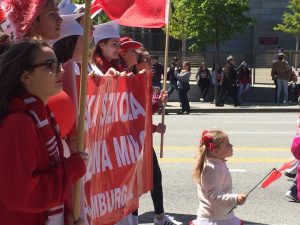
A young girl marches in the 126th annual Chicago Polish Constitution Day Parade on Saturday, May 6, alongside fellow participants.
which the PMA lists as the first democratic constitution in Europe, and second in the world to the United States Constitution. The parade route went along Columbus Drive.
The parade was a sea of red and white. Everyone, from young children to elderly grandmothers, was proudly displaying their Polish pride.
Participants, carrying Polish banners and waving the national flag, marched past Buckingham Fountain and the Art Institute of Chicago. The procession seemed to continue for miles, with a never ending line of red and white trailing down the drive.
The atmosphere was what one would usually associate with a parade: the occasional loud bursts of music from floats and an echo of cheers as a group of motorcyclists rode past waving the Polish flag.
The red and white of the participants seemed to glow against the blue Chicago skyline. With their heads held high, each participant exuded pride in their nationality as they proceeded down the half mile long drive.
One of the best parts of the parade had to be the overwhelming participant of younger generations. Children, some no older than five, waved red banners and proudly walked alongside the older participants.
The parade’s goal was to celebrate the Polish Constitution, yet it also acted as a unifying event that allowed its participants to embrace and celebrate their Polish heritage.
Malott Japanese Children’s Festival
The Malott Japanese Children’s Festival was an event hosted at the Chicago Botanic Garden on the weekend of May 20, specifically geared towards children. The event took place
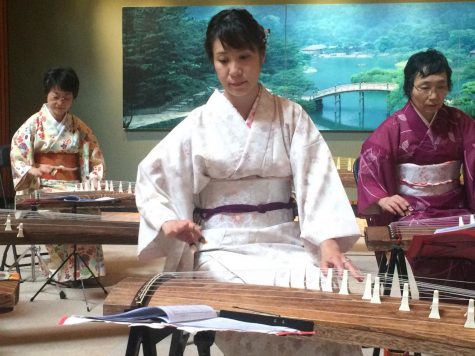
Members of the Chicago Koto Group perform during the Malott Japanese Children’s Festival at the Chicago Botanic Garden on the weekend of May 20
inside the Nicholas Hall of the Regenstein Center.
There were booths set up around the center with activities ranging from origami samurai hats to colorful carp kites that children were able to color. Alongside the booths was a stage area, with four events scheduled for the day. For both days, the events planned included a Japanese tea ceremony, a shakuhachi flute performance, traditional storytelling, and a performance by the Chicago Koto group.
Noriko Takahara, a member of the Chado Urasenke Tankokai Chicago Association, supervised the tea ceremony as other members performed the ceremony for the audience. Takahara has studied and performed tea ceremonies for many years, and has formed a passion towards the tradition.
“The learning of tea and the teaching of tea really incorporates all aspects of Japanese cultures,” Takahara said, according to her translator, Michiyo Oyasu.
Learning about and performing tea ceremonies include appreciation of flowers, customs, and pottery, which are all vital to Japanese culture, according to Takahara.
In Japan, Takahara performs the tea ceremony for preschool and kindergarten students in hopes of teaching them about the Japanese culture. For those born in America, Takahara views it as a challenge to immerse them in the Japanese culture, as they are losing connection with their heritage.
“We feel that their parents’ generation should be more influenced so that they can transcend the Japanese culture to their children,” Takahara said.
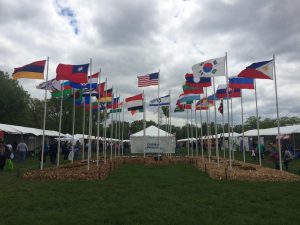
Flags representing the 37 countries are displayed with the American flag in front of the Cultural Pavilion, where cultures have informational booths set up.
Skokie Festival of Cultures
Skokie, a neighboring village to Chicago, hosted an annual Festival of Cultures on the weekend of May 20, which the city has been doing since 1991. The event is one of the “premier ethnic festivals in Illinois” and attracts more than 450,000 visitors, according to the Skokie Festival of Cultures website.
Robin Horwitz, the entertainment chairman of the festival, said that 37 countries will be represented this year, a large contrast from the seven to eight cultures that the event started with 27 years ago.
The focus of the festival, in Horwitz’s opinion, is to bring different cultures together. She said that the event is preluded by six months of planning by the representatives of the cultures represented. Horwitz describes the planning process as friendly and teamwork based, without any political tension.
“In the atmosphere that we have today, I think that it’s more important than ever (to have something like this),” Horwitz said in regards to the festival. “It teaches people to understand and appreciate the differences, but to also be able to come together and blend together and work together.”
Upon entering the festival, the theme of embracing diversity was more than apparent. Alongside the American flag, a collection of flags representing other countries were blowing in the wind. Behind the flags was an area named the Cultural Pavilion, and rightfully so.
Within the Pavilion, each country had set up a booth where people were able to learn more about the traditions.
In front of the Pavilion was a large outdoor stage that featured performances by different cultural groups.
Diversity is definitely the central focus of the festival. However, for those representing their countries at the festival, it is more than celebrating diversity.
Jinoo Varghese is a faculty member at the Soorya Dance School, one of the many performances at the festival. The Soorya Dance School teaches classic Bharatanatyam dance to children from ages six and up. Varghese views learning traditional dance as a way to further embrace one’s culture.
“The children that we teach are born and grown in the US, and they get very little chance to understand and see our Indian culture,” Varghese said. “I think this dance has made them a better person, and teaches some kind of discipline and tradition.”
Bharatanatyam is a story telling media, according to Varghese. Students are able to learn more about Hindu mythology and Indian traditions through the story they present on stage.

